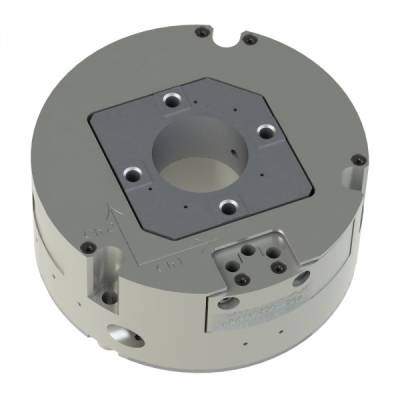Consideration of the environmental conditions where a nanopositioning system will operate is important to achieve the desired result for a given application.
These conditions include:
- Vacuum (HV, UHV, etc.)
- Magnetic Fields
- Temperature
- Moisture
- External Vibration
Piezo stages can be made from various materials such as invar, stainless steel, titanium and aluminum. Each has advantages; however it is often important to match the materials of the stage to that of the external systems for the best result. Aluminum is a common material used because it has a good density-to-stiffness ratio. It is also good for applications that require a magnetic field. Materials such as Invar or Super Invar have a low thermal coefficient which can provide stability when temperature considerations cannot be isolated. Stainless steel can be used in applications that require greater stiffness as well as a great deal of temperature stability. Titanium can be used when strength, stability, and non-magnetic properties are all at a premium.
Piezo stages can operate in UHV and environments that require non-magnetic positioning. Stages are designed with particular applications in mind and are made out of materials accordingly. Custom stages can be designed for unique applications and choosing stage material is an important part of the process. Most stages can operate under low to medium vacuum. Certain off-the-shelf stages are designed to work in UHV environments.
Vacuum Level | Vacuum Range (Torr) |
Low Vacuum | 1 to 10^-3 |
Medium Vacuum | 10^-3 to 10^-5 |
High Vacuum (HV) | 10^-6 to 10^-8 |
Ultra High Vacuum (UHV) | <10^-9 |
Piezo stages are used in a variety of different environments. Proper planning can help provide the best performance for a unique set-up. Vibrations in the apparatus where the piezo stage will be used can lead to less than expected performance. External mechanical disturbances, nearby equipment, and acoustic vibrations can all contribute to positioning inaccuracies. In order to get the best results, a vibration isolation table should be used to help control external vibrations in the system. When working in external environments the nanopositioning system should be shielded from moisture. Large variations in temperature can cause equipment to shift outside the control of the piezo stage. Systems such as this should be planned for accordingly to get the best result.
Knowing how external conditions will affect a system will allow the user to properly choose a stage that will help achieve the desired result. It is always best to discuss these items with your nPoint representative.





